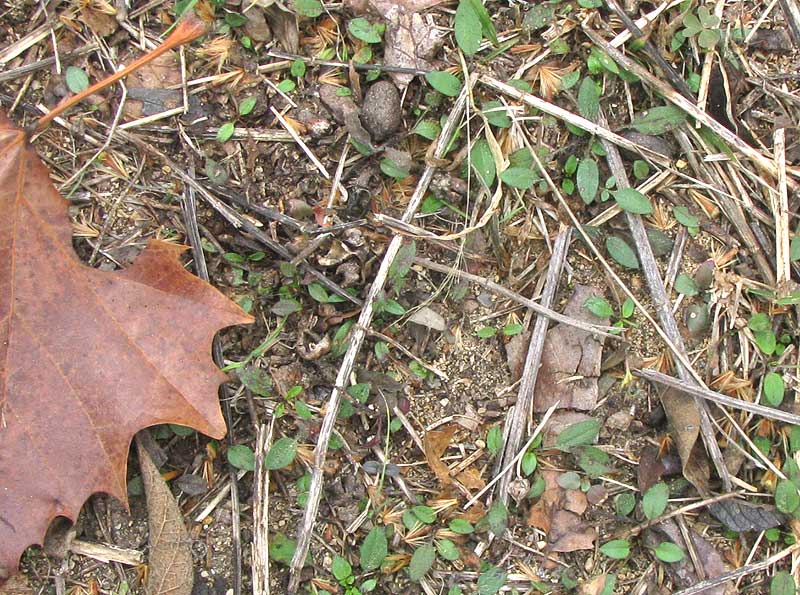Excerpts from Jim Conrad's
Naturalist Newsletter

from the December 23, 2012 Newsletter issued from the valley of the Dry Frio River in northern Uvalde County, southwestern Texas, on the southern border of the Edwards Plateau; elevation ~1750m (~5750 ft); N29.62°, W99.86°; USA
WINTER ANNUALS GREENING THE GROUND
Winter annuals are plants that germinate in autumn, live through the winter, and produce seed and die the following season. Up North and where there's generous rainfall you can find winter annuals at this time of year -- especially weeds such as Chickweed, Henbit and Shepherd's-purse -- but it seems that here at the arid edge of the Chihuahua Desert winter annuals seem to occur in much greater numbers and diversity. They're not only weed species but also plants highly adapted to our often harsh habitats, such as the thin, droughty soil atop limestone, and in the cobble fields along the Dry Frio River. In many places, despite this being early winter, the ground is green and springy looking, as shown above.
There are reasons why being a winter annual in our edge-of-desert environment would be a good living strategy for a plant. One explanation is suggested by the fact that no annual plants occur in the polar regions or wet tropics. In both of those environments, intense competition for suitable growing sites favors perennial plants, who live by the motto "Once you've got it, hang onto it for more than one season." However, in our edge-of-desert environment, perennials are widely spaced because they need to send roots through a large soil area in order to attain water during drier years. Much in contrast, during a brief rainy season or a not-too-cold winter such as we have here, herbs can live their entire lives between the widely-spaced perennials.
A general rule in North America is that the more arid the habitat, the greater the proportion of annual species to perennial ones, and a lot of those annuals will be winter annuals.